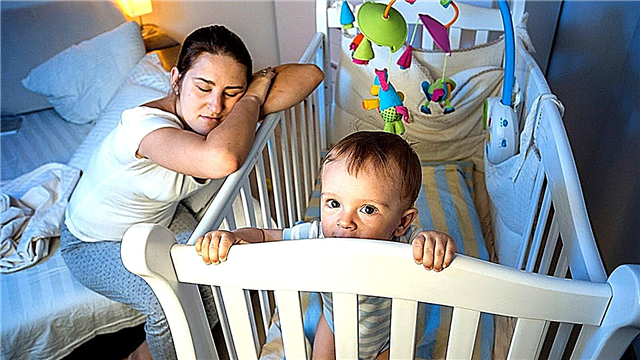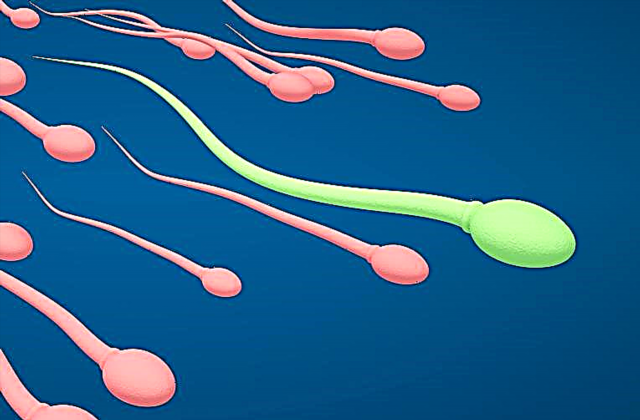A cough in babies without fever sooner or later occurs in every second family. Often, parents cannot understand why there is no fever, and the child's cough does not go away. A baby can cough for more than a month, and the etiology will remain unclear. Finding the cause is necessary to fix the problem.
Cough is a protective reaction of the body to the introduction of a foreign agent into the respiratory tract. By the nature of sputum discharge, it is divided into wet and dry. This allows in the future to choose the right treatment.
Causes of a cough in a child without fever:
- allergic component;
- inflammatory diseases of the upper and lower respiratory tract;
- foreign bodies in the respiratory tract;
- helminthic invasions;
- physiological cough.
Allergies and coughs in a child
Children, especially under one year old, are often prone to the appearance of diathesis. Against this background, a paroxysmal dry cough may occur. The main thing here is to eliminate the allergen: dust particles, pet hair, houseplants.
Doctor-pediatrician A.A. Baranov in his book describes the primary and secondary prevention of allergic sensitization. To prevent hypersensitivity, you need:
- maintain breastfeeding for as long as possible (at least up to 6 months);
- exclude passive tobacco smoking;
- periodically (2 times a year) donate blood for specific Ig E, which indicates the presence of an allergic component;
- exclude contact with animals, dust, and the like (hypoallergenic life);
- follow a hypoallergenic diet.
When allergy symptoms manifest, treatment with antihistamines drugs (Zodak, Zyrtec, Loratadin), inhalations with drugs that expand the lumen of the bronchi (Berodual, etc.) up to 3 times a day. Inhalation with physiological saline solution (to moisturize the mucous membrane of the bronchi and upper respiratory tract).
It is necessary to strictly observe the age dosage and follow the doctor's prescriptions. Any medications have contraindications, which must be read before use!
Laryngitis and bronchitis
These are insidious inflammatory diseases that are accompanied by a dry, hacking cough. With laryngitis, it has a "barking" character and is accompanied by a hoarse voice.
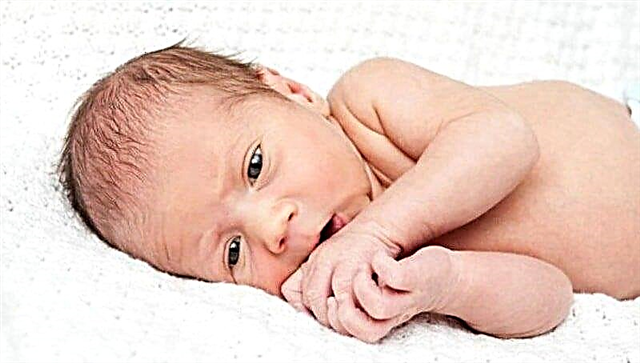
It is dangerous because with it, especially in young children, swelling of the larynx rapidly increases and an attack of suffocation may occur.
In practice, this usually happens in babies at 6-7 months. Laryngitis and bronchitis are caused by the common cold and may be accompanied by other respiratory symptoms such as a runny nose. The cough can become chronic and last up to 2 to 3 months with inadequate treatment.
What to do to prevent chronic coughing?
- First aid for acute laryngitis is inhalation with saline and adrenaline, in a ratio of 1: 5, up to five times a day. This quickly relieves laryngeal edema.
- Drink plenty of fluids. You can give mineral water without gas in small sips.
- Antitussives and mucolytics.
Foreign body in the airway
The cause of a cough may be accidental ingestion of balls, buttons, coins or small office supplies into the respiratory tract. The cough begins suddenly, the child's voice disappears, breathing becomes difficult, the skin turns blue.
In this case, an emergency call for an ambulance is required! Parents, be careful! Do not leave your baby unattended, hide all small items!
Parasites and cough
Worm infestations can also cause coughing. Some types of parasites are able to enter the lungs, which provokes symptoms such as coughing. These are echinococcosis, alveoloccoccosis, which can be easily infected from dogs and cats. You can catch psittacosis from parrots, which is also accompanied by a cough.
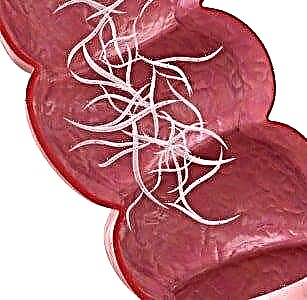 These infections tend to settle in the lungs. But helminthic invasions of the intestines and protozoal diseases of the biliary tract can also cause symptoms of pulmonary diseases. How? Just when these infections and parasites get into the gastrointestinal tract, the body is sensitized, perceives them as allergens.
These infections tend to settle in the lungs. But helminthic invasions of the intestines and protozoal diseases of the biliary tract can also cause symptoms of pulmonary diseases. How? Just when these infections and parasites get into the gastrointestinal tract, the body is sensitized, perceives them as allergens.
Because of this, skin rashes may occur, total immunoglobulin E and eosinophils in the blood may increase, which will falsely suggest an allergy to the doctor.
But experienced pediatricians know that if you suspect an allergic dermatitis or an allergic cough, helminthic infestations in a child should be excluded.
2 times a year, it is necessary to take tests for worm eggs, especially if the child is attending a children's team, and, if necessary, sanitize with anthelmintic drugs.
Medicines in the treatment of pathological cough in a child
Antitussive drugs are subdivided into:
- expectorant;
- mucolytic.
The first group is used to improve sputum discharge. Preparations from the second group are intended to liquefy it.
Expectorants:
- Stoptussin;
- Codelac;
- Bronchicum.
Mucolytic drugs:
- ACC;
- Ambroxol (Ambrobene, Lazolvan);
- Ascoril.
The most common in pediatric practice is Ambroxol, or Ambrobene.
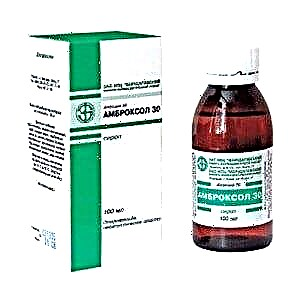 The drug is good enough, there is a quick effect, it can be prescribed from the age of three months in the form of syrups. It is used up to 2 - 3 times a day by mouth or by inhalation. ACC drug is used in the form of a syrup from 2 years.
The drug is good enough, there is a quick effect, it can be prescribed from the age of three months in the form of syrups. It is used up to 2 - 3 times a day by mouth or by inhalation. ACC drug is used in the form of a syrup from 2 years.
Children under 3 years of age should be given these drugs with caution, as there is a rapid and abundant sputum discharge in large quantities.
It is difficult for a kid to cough up such a volume. A good effect is provided by the use of a nebulizer, thanks to which the drug directly enters the bronchi and lungs.
Herbal teas are also helpful. True, in order to avoid allergic reactions, you should not get carried away with them. For babies, calendula, chamomile and thyme are used.
Physiological cough
In newborns, due to the anatomical features of the respiratory system (the bronchial mucosa is tender, covered with many blood vessels, a thin layer of mucus), a physiological cough often occurs, which allows you to clear the upper respiratory tract of accumulated mucus.
Its peculiarity is that:
- it is not accompanied by a rise in temperature;
- the baby eats well, sleeps, is not capricious;
- does not require medication.
Doctor Komarovsky advises to eliminate this type of cough:
- ventilate the room 3 - 4 times a day for 10 minutes;
- perform daily wet cleaning;
- humidify the air;
- walk in the fresh air for 1.5 hours.
During teething, in the fourth - fifth month of life, the child develops copious salivation, as a result of which coughing may occur. It also requires no treatment.
In general, we can say that coughing in infants up to a year is a completely normal symptom, if there is no fever. This cleans the respiratory tract from accumulated mucus and dust.
Article rating:

